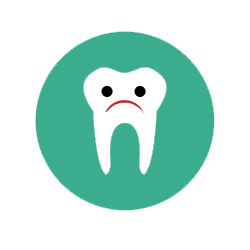
26
Mar, 2015
What to Do in a Dental Emergency
Unfortunately, even apparently harmless pursuits like exercising and eating can sometimes lead to dental emergencies. However, if you understand what you need to do in a dental emergency then you will maximize your chances of tooth repair and minimize your chances of long-term mouth pain.
What is a dental emergency?
Any incident that damages the teeth or soft tissue inside the mouth and that requires prompt treatment by a dentist can be classified as a dental emergency. Common examples include a broken, cracked or chipped tooth, gum pain caused by lacerations, and loose dental crowns.
How can dental emergencies be prevented?
Significant tooth and gum damage can occur unexpectedly during a fall or other type of accident. However, you can take precautions to prevent some of the most obvious everyday causes of dental emergencies.

Protect Your Teeth
Wear a mouth guard when playing sports, especially if you are participating in contact sports.

Don’t Abuse Your Teeth
Don’t use your teeth to rip open packaging, loosen bottle lids, or other impracticable items.

Avoid Hard Foods
Avoid eating particularly hard foods that are difficult to chew, as these foods can break natural teeth or dentures.

Take Preventive Measures
If you think you grind your teeth while you are sleeping, make a dentist appointment to discuss obtaining a night-guard that will protect your teeth.
What can I do to prepare for potential dental emergencies?
It’s a good idea to invest in supplies that can help you if you damage your mouth. Ideally, you should have gauze, a bottle of sterile saline solution and a clean container. In addition, always ensure your dentist’s phone number is close at hand.
How should the most common dental emergencies be handled?
In any dental emergency, you should contact your dentist immediately. In addition, there are also some actions you can take before your appointment that may help to make treatment more effective.
- If your tooth has been knocked out, you need to see a dentist within an hour if the tooth is to survive. When touching the tooth, make sure you avoid touching the root (i.e. the part at the bottom) in case you damage vital cells that are necessary for successfully reattaching the tooth to the bone. Rinse the tooth carefully, and then put it in your cheek to prevent it from drying out. If you are unable to keep the tooth in your mouth for some reason, put it in a small, clean container and add milk.
- If you have a fractured tooth, it is a good idea to rinse your mouth out and use an ice pack to keep swelling under control. Smaller fractures simply need smoothed over, but smile reconstruction may be necessary for more complex fractures.
- If you’re dealing with lacerations or cuts in your gums, cheek, tongue or lips, you need to clean the wound with warm water as quickly as possible. A dental surgeon should be your first choice, but you may want to consider a hospital if it is closer or if you are struggling with persistent bleeding.